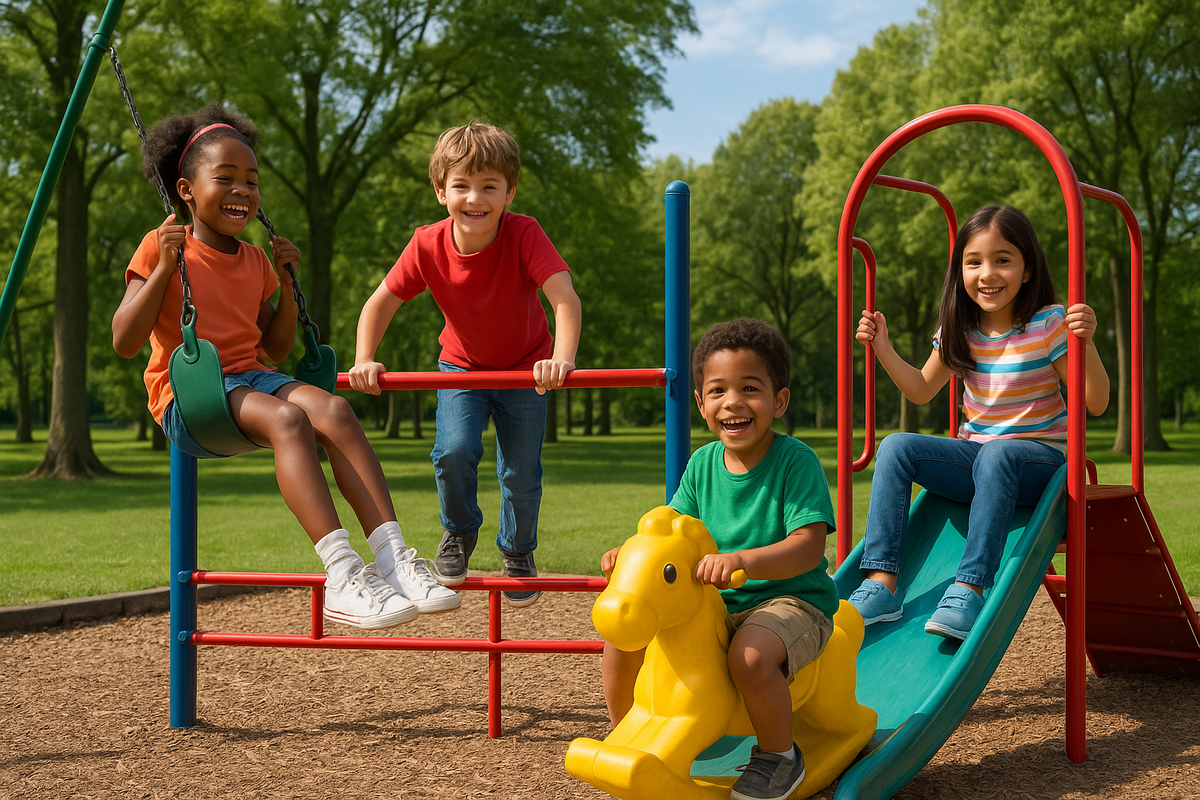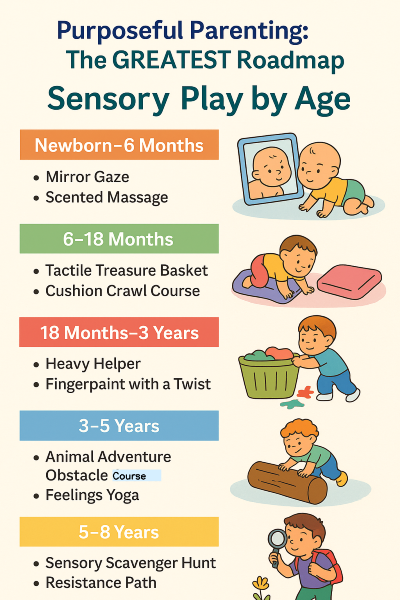Beyond the Five: Exploring the Full Spectrum of Your Child’s Senses

A Balancing Act with Big Benefits
Your 3-year-old daughter is wobbling across a stepping stone in the yard, arms out like a tightrope walker. She pauses, adjusts her footing, and beams with pride. At first glance, it is mere play. But actually, she is working hard, building balance, coordination, and body awareness.
This is sensory play in its richest form. And there’s more to it than the five senses we usually think about.
The Classic Five… And Then Some
As parents, we’re familiar with the five core senses:
👀 Sight | 👂 Hearing | 👃 Smell | 👅 Taste | ✋ Touch
They help children discover their world, from marveling at a butterfly to squishing dough between their fingers.
But did you know three additional senses are also as important for your child’s growth?
Meet the “Hidden” Senses
Vestibular Sense (Balance and Movement)
This sense, rooted in the inner ear, helps kids understand motion and gravity. Activities like swinging, spinning, rolling, and rocking develop balance and coordination.
Proprioception (Body Awareness)
Proprioception tells the brain where body parts are without needing to look. Movements like jumping, climbing, and pushing heavy objects build strength, control, and confidence.
Interoception (Internal Sensations)
Interoception is the sense that helps children recognize internal signals like hunger, needing the bathroom, or feeling nervous. It lays the groundwork for self-regulation and emotional literacy.
Research supports the inclusion of these senses in early childhood development. Studies show that integrating vestibular and proprioceptive activities in early education can significantly enhance sensory processing, motor skills, and emotional self-regulation in young children1.
Why This Matters
When sensory play involves more than just the “big five,” children:
- Develop better focus and emotional control
- Improve balance, posture, and motor planning
- Learn to tune into their bodies and needs
And best of all? It’s easy to support at home.
Sensory Activity: “Animal Adventure”
Try this playful, full-body activity that targets the lesser-known senses:
Step 1: Set the scene
“We’re off to the forest! Can you move like the animals we meet?”
Step 2: Move like animals
- Bear crawl (proprioception)
- Frog jumps (vestibular + strength)
- Crab walk over pillows (coordination)
- Snake slithers under a blanket tunnel (vestibular)
Step 3: Body check-in
“Is your body hot or cold? Do you feel tired? What do you need?” (Interoception)
These are simple, silly, and incredibly effective.
The Takeaway
Sensory play is more than bright colors and soft textures. It’s a whole-child experience. By including all eight senses in your child’s development, you provide more and richer tools for navigating their world.
Next time your little one spins, crawls, or climbs like a wild animal, smile. That’s their brain growing, one joyful sense at a time.

Footnotes
- Miller, L. J., Coll, J. R., & Schoen, S. A. (2007). A randomized controlled pilot study of the effectiveness of occupational therapy for children with sensory modulation disorder. The American Journal of Occupational Therapy, 61(2), 228–238. https://doi.org/10.5014/ajot.61.2.228 ↩